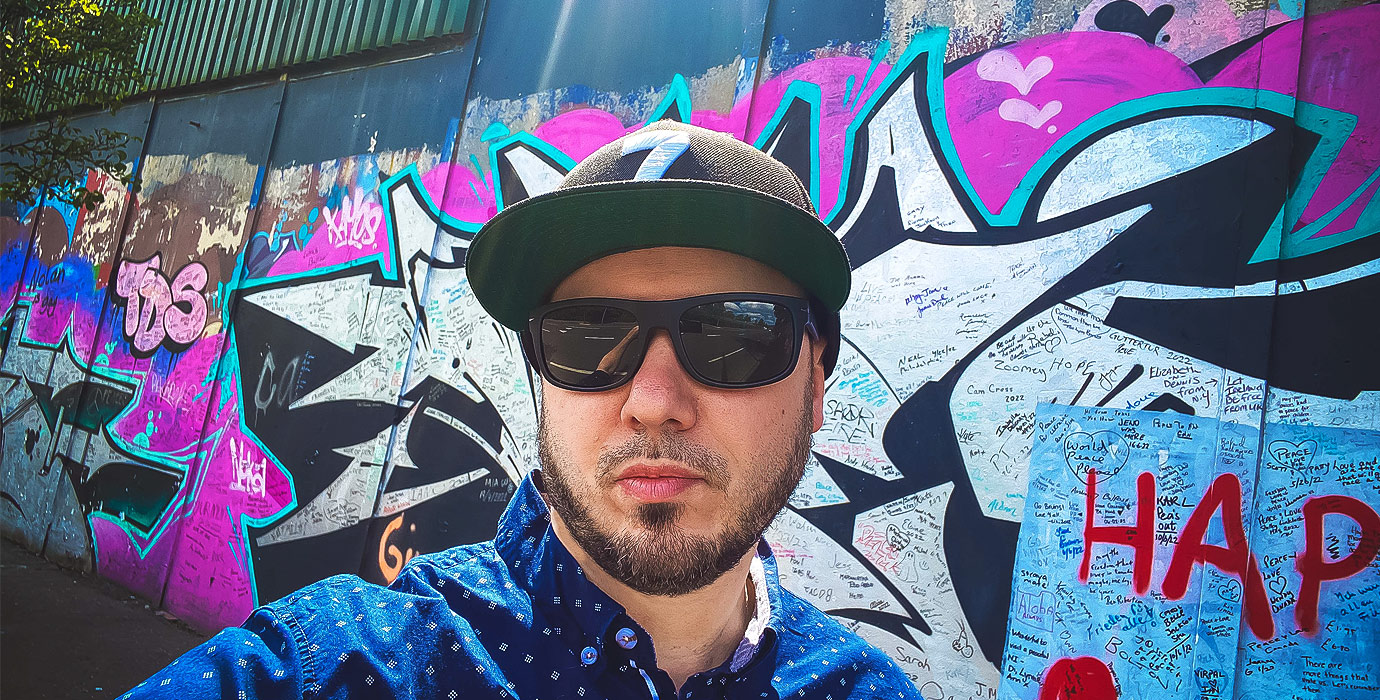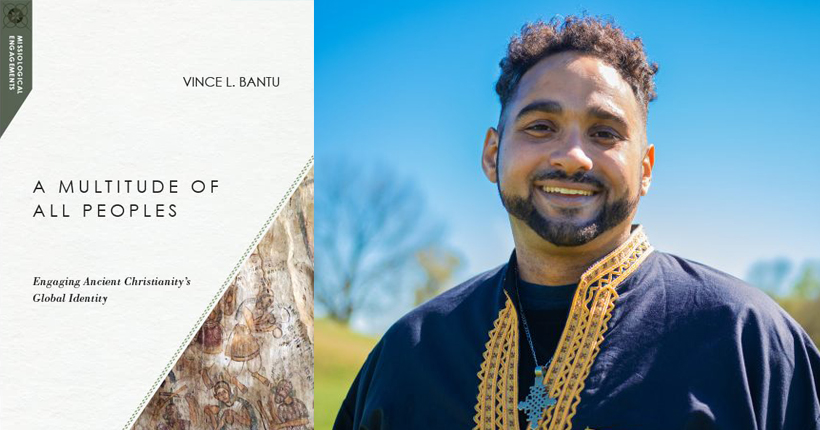When I enrolled in seminary at Gordon-Conwell’s Center for Urban Ministerial Education (CUME) in 2006—where Vince and I were classmates—one of my very first classes was with Soong-Chan Rah. That semester he lectured on material that would eventually become his 2009 book, The Next Evangelicalism: Freeing the Church from Western Cultural Captivity. He warned us that just about everything we would learn in seminary would be culturally captive to a Western perspective, and he was right. My systematic theology and church history courses were almost exclusively about dead, white/European men, their histories and their theologies. Church history courses focused on figures like John Calvin, Martin Luther, Jonathan Edwards, and Charles Spurgeon. Systematic theology courses focused on “orthodoxy,” viewed through the lens of the Protestant Reformation and the American Evangelical movement. Like so many others before me and since, to learn about Latin American or Asian American or African American history or theologies, I had to take elective courses or do independent research. That is why a book like A Multitude of All Peoples is a necessary corrective to the whitewashing of formal Christian higher education in the U.S.—especially as it relates to church history and theology.
This cultural captivity of the American church to the Western cultural perspective isn’t just an academic problem either. It has real-world consequences that damage the unity and witness of the church. In Los Angeles, I served as a pastor of a highly diverse congregation that gathered for worship Downtown near Skid Row. The church was so diverse that it didn’t have a majority ethnic group. To grow in our unity and to foster understanding of one another’s cultural backgrounds and ethnic heritages, we regularly facilitated small groups that had this as its primary goal. Over the course of a summer, every member of a small group would have the opportunity to share their story with the others in the group uninterrupted and without being contradicted. Group members were encouraged to talk about their family’s heritage, culture, customs, and experiences. These stories often included heart-breaking episodes of discrimination and injustice. In these groups I learned so much and heard so many beautiful expressions of God’s Spirit at work in the cultures of different people groups.
At the end of the summer, we gathered everyone into ethnic affinity groups. Then each group was to share with the other groups about aspects of their culture or history they’re proud of and that have contributed to the church. When it came time for the people of European decent to share, a woman told everyone in the room she was proud that her ancestors had shared the Gospel with all the ancestors of the other ethnic groups, otherwise they’d never have heard about Jesus. The anger and pain in the room was palpable. But someone will say, “That’s just because she was uninformed about the rich history of Christian traditions that preceded European Christianity in Africa, Asia, and the Middle East.” Yes, that’s correct. But this illustrates my point. If this woman was simply uninformed, her seminary training was at fault for her ignorance, because she’d graduated from Fuller with a Masters of Divinity! Imagine how many pastors around the country (even the world!) who, like her, took away from their seminary education that Europeans are solely responsible for the spread of Christianity around the globe. Imagine the damage that kind of ignorance has wrought upon the church.
Reintroducing American Christians to Global Christianity
The predominate view of church history and theology that is received in many (likely most) modern American institutions—particularly the Evangelical kind—is that Christianity began to become a global faith when American and European missionaries began spreading Christianity to the world in the 19th and 20th-century missionary movements. But as Dr. Bantu so clearly points out:Christianity is and always has been a global religion. For this reason, it is important to never think of Christianity as becoming global. […] Contemporary mkissiologists have drawn much-needed attention to the demographic shifts that have taken place in the twentieth and twenty-first centuries and have given helpful challenges to the ‘Western, white captivity of the church.’ However, in drawing attention to such developments, there has been an implication that global diversity is exclusively a twentieth centering innovation of the Christian movement. (p.1)This is at the heart of the problem. There is such strong Euro-American ethnocentrism and latent White Supremacy at work in American seminaries that church history and theology is distorted to teach that the church only recently became diverse due to modern missionary movements which were largely launched from the U.S. and various European countries. This is a whitewashing of church history. The reality to which A Multitude of All Peoples reintroduces readers is far more complex. Dr. Bantu reintroduces readers to figures who loom large on the stage of church history as the Africans, Asians, and Middle Eastern people they actually were. He likewise reintroduces readers to the geography of the expansion of the Gospel into Africa and Asia from the Middle East—long before the Gospel was preached in what is now “Europe.”
Egypt was home to many of the earliest biblical manuscripts and had an organized ecclesiastical hierarchy no later than the late second century. Ethiopia became a predominately Christian nation in the fourth century and along with Nubia, functioned under the ecclesiastical hierarchy of Egypt. Syriac-speaking Christian merchants brought Christianity along the Silk Road to the Persian Empire in the early third century, to Central Asia in the mid-fourth century, and as far east as China in the mid-sixth century. While it is possible that the apostle Thomas brought the gospel to India in the first century, Syriac-speaking Christians reported missionary activity in India no later than the late third century. These traditions spread rapidly across the continents of Africa and Asia and took on indigenous forms at a time when the majority of Northern and Western Europe practiced pagan religion. Despite the persisting association of the Christian faith with Western culture/whiteness, Christianity has always been a global religion that spread from Jerusalem in every direction. (p.3)Most of A Multitude of All Nations is this detailed history of the Gospel’s spread throughout Africa, the Middle East, and Asia. But not only does Dr. Bantu problematize modern American (and Evangelical) notion of the Euro-American missionary expansion of the Gospel around the world, he also problematizes the modern American (and Evangelical) notion of “orthodoxy.”
Reintroducing American Christians to Orthodoxy
Along with the detailed history of the Gospel’s early spread to Africa, the rest of the Middle East, and Asia, the book also problematizes the notion of “orthodoxy” that has come to dominate, especially in modern American Evangelical circles. What is taken for granted by the vast majority of Western Christians is that there is a clear and decisive history of orthodox theology going back to Nicea and Chalcedon. But like the whitewashed history of Christian missions, this too is a narrative warped by Euro-American ethnocentrism and White Supremacy. The reality is far more complex. This will likely be the most challenging and paradigm-shifting aspects of the book for readers. It was for me. My seminary training, and basically everything I’ve read on theology, has reinforced the notion that Christian orthodoxy was straightforwardly decided through a series of councils beginning with Nicea and Chalcedon. But this accounting rarely factors in the enormous socio-political and cultural implications of associating the Christian faith with Rome. Anabaptists and modern “Neo-Anabaptists” have done a very good job popularizing the notion of the “Constantinian Shift,” the fundamental change of the church from persecuted minority to ruling power, and problematizing the notion of the church being married to imperial power and wealth. But rarely has this shift been examined from the standpoint of the socio-politics of ethnicity and culture. There were already well-established ecclesiastical hierarchies in nations like Egypt and Syria, that had their own views about the person and nature of Christ in relationship to the Father and Spirit. These rich and biblical theological views have been marginalized and labeled heretical in sweeping and absolutist pronouncements. But we have rarely stopped to think about why. We have accepted the logic that this was merely and purely about the theology, having nothing to do with culture or ethnicity. But this is naive at best. Dr. Bantu demonstrates that at every point along the development of what Westerners today call “orthodoxy” there was opposition not from African and Asians, but from Romans. This problematization of the accepted narrative of Roman orthodoxy is so refreshing!The Ethiopian Kingdom of Axum and its church, however, rejected the Arianism of the Roman Empire and sided with Athanasius in orthodox Christology. […] Therefore, in the mid-fourth century the African churches of Egypt and Ethiopia upheld the doctrine of Jesus’ divinity while the ruler of the Roman Empire was attempting, unsuccessfully, to impose the belief that Jesus was a created being. (p.101)But Bantu doesn’t only problematize the idea that Romans and proto-Europeans had a monopoly on orthodoxy, he also problematizes our notions of orthodoxy altogether.
The two-nature Christology developed at Chalcedon became a dividing point that caused the first major split in the history of Christianity, equal only to the East-West schism of the eleventh century and the Protestant Reformation. The Chalcedonian schism, however, represents the most significant ecclesiastical divide with regard to the perception of Christianity as a white man’s religion. While all schisms in church history are at once theological as as cultural in nature, this first major schism resulted in the marginalization of all the major non-Western Christian traditions in antiquity. With the major ecclesiastical centers of Africa, the Middle East, and Asia now condemned as heretical, the church of the Roman Empire would increasingly come to see itself as the sole heir and guardian of orthodox Christianity. Non-Western Christian groups were then ignored, oppressed, and colonized by the dominant Roman church until an unprecedented world superpower emerged that dramatically altered the fate of the non-Western Christian world. [Islam] (p.48)This will no doubt be the hardest pill to swallow of all the hard pills this book presents, but it’s highly persuasive. In the same way that the Constantinian Shift represents a fundamental break from the authentic Jesus Way of nonviolence and an alternative community from the Roman Empire, the Chalcedonian Shift represents a fundamental shift from the multi-cultural, multi-ethnic, beautiful mosaic of Christian cultures united in the One Faith, to a Roman and proto-European dominated “orthodoxy.”


